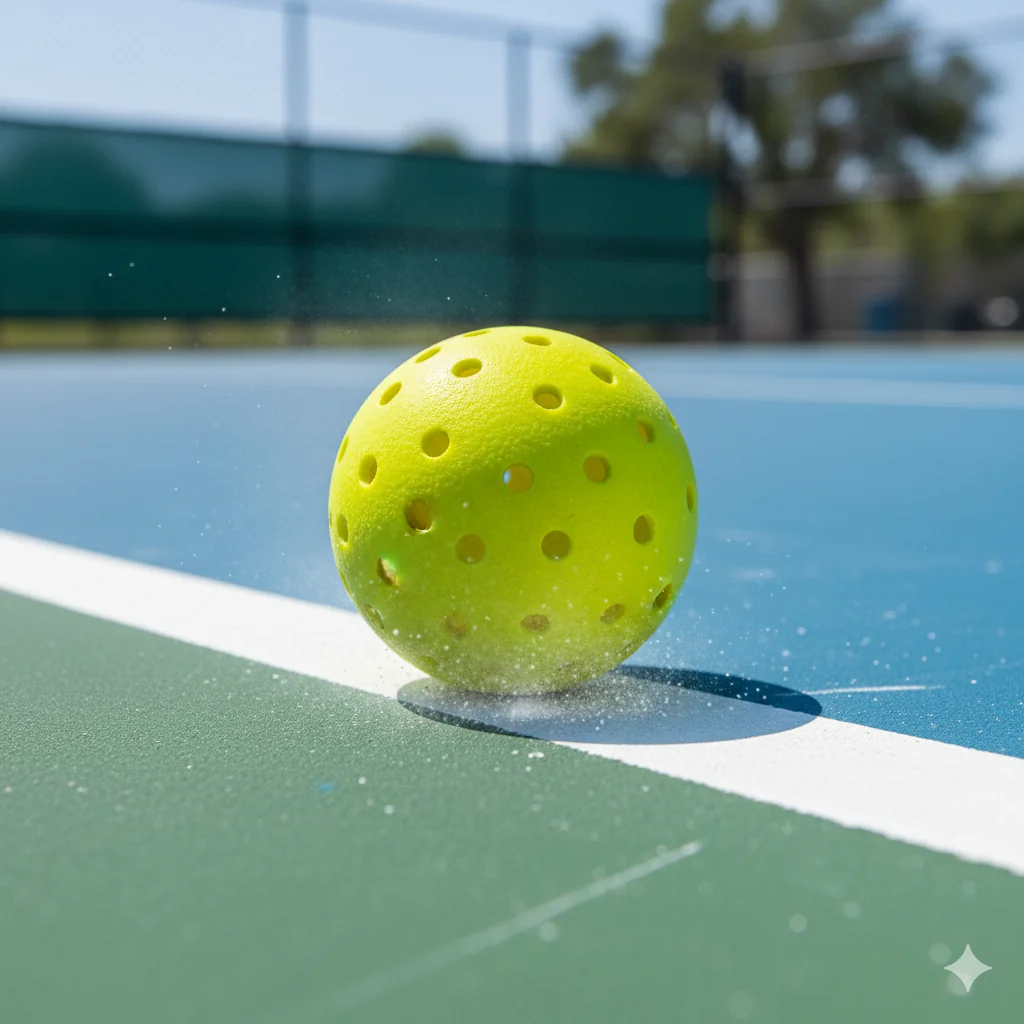Pickleball Line Rules: A Clear Guide to 'In or Out' Calls

It's the most common argument in pickleball: a fast-paced shot lands right on the edge of the court. One team yells 'Out!' while the other is certain it was 'In!'. Misunderstanding the pickleball line rules can lead to frustrating disputes and broken game flow. This guide will provide a definitive answer, with clear examples and diagrams, so you can make the right call with confidence every time.
Is a pickleball in or out if it hits the line?
In pickleball, if any part of the ball touches any court line during a rally, it is considered IN, with the exception of the Non-Volley Zone (or 'Kitchen') line on a serve.
In This Guide
The Golden Rule: If It Touches the Line, It's Good
The most fundamental of all pickleball line rules is simple: the lines are part of the playable court area. Think of the line as being 100% in-bounds. If the ball makes any contact with the line, even grazing the very outer edge, it is a good shot. It does not matter how much of the ball is inside or outside the line; any contact is enough. This rule applies to all lines during a rally:
- Sidelines: The lines on the left and right sides of the court.
- Baselines: The lines at the very back of the court.
- Non-Volley Zone (Kitchen) Line: After the serve, this line is fully in play.
- Centerline: The line dividing the service boxes.

A ball is 'IN' if it touches any part of the line. A ball is 'OUT' if there is visible space between the ball and the line at the point of impact.
Who Makes the Call? Responsibility & Etiquette
Knowing the rule is one thing, but who enforces it? According to the official pickleball court rules, line calls are the responsibility of the players on the side of the court where the ball landed. You should only make line calls on your side of the net. It's considered poor etiquette to call a ball 'in' or 'out' on your opponent's side unless they specifically ask for your opinion. What if you're not sure? This is where the 'benefit of the doubt' principle comes in.
Official Rule: Benefit of the Doubt
The official USA Pickleball rulebook emphasizes that players should always give the 'benefit of the doubt' to their opponent. If you did not clearly see a ball land out, you must consider it in. This principle keeps the game fair and fun.
Specific Line Scenarios You Must Know
While the general rule is simple, a few specific situations have unique applications.
1. The Serve
The serve has one key exception. If a serve lands on the Non-Volley Zone (Kitchen) line, it is a fault. The serve must land beyond the NVZ line and within the correct service box boundaries (sideline, baseline, and centerline). A serve touching any of those other three lines is good.
2. The Non-Volley Zone (Kitchen) Line & Your Feet
When it comes to pickleball rules for hitting the ball on the bounce or in the air (a volley), the NVZ line has a different meaning for your feet. If you or your momentum cause you to step on the NVZ line while hitting a volley, it is a fault. For your feet, the line is part of the Kitchen.
3. Hitting the Ball After the Bounce
Whether a shot is in or out is determined by where the ball lands, not where you are standing when you hit it. You can be standing out of bounds to hit a ball that bounced in-bounds.
Common Mistake: Ball vs. Feet
A frequent point of confusion is mixing the rule for the ball with the rule for a player's feet at the NVZ. Remember:
- Ball on NVZ line (during rally): IN
- Foot on NVZ line (during volley): FAULT
Frequently Asked Questions About Line Calls
What if you can't see if the ball was in or out?
If you are the one making the call and you are uncertain, the official rule is to give the benefit of the doubt to your opponent. The ball is considered in.
Does a serve have to clear the kitchen line in pickleball?
Yes. A legal serve must land past the Non-Volley Zone line. If the serve lands directly on the NVZ line, it is a service fault.